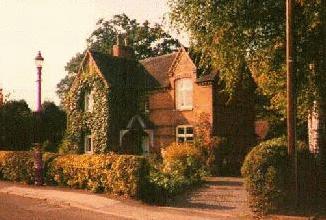 |
 |
|
|
|
These pages were produced by Roy Mat for his Wilford & Clifton Index in 1997 |
Miscellaneous Clifton Information |
The Tale Of The Turf Cross & The Gamekeeper
In the Clifton Book Ross Bruce describes a cross cut into the grass next to 'the road to Nottingham about 150 yards from the green'. The cross was a memorial to the Clifton's gamekeeper, Samuel Daykin who 'died in the execution of his duty'. It marked the spot where in the early hours of the 5th of June, 1893 Daykin challenged a group of poachers. They responded by shooting him dead. The group were subsequently captured and the trial attracted much publicity. The courts found them not guilty on the technicality that Daykin had been carrying a gun and the poachers had merely fired in self defense. Shockingly, the aquitted men were treated as heroes by the towns people. They celebrated the aquittel with a brass band accompanied parade through the streets of Nottingham with the poachers leading the way! Perhaps the Nottingham people felt the gamekeeper represented an unpopular authority figure. Maybe they believed that the gamekeeper had fired first or maybe it simply serves as an example of the morality of the day.
The people of Clifton must have felt the shooting was unjust for the memorial turf cross was maintained for forty seven years after the incident, ending only with the social upheaval of the second world war. Soon after the shooting, Daykin's widow was provided with a cottage by the then Clifton manor holder, Sir Hervey Bruce.
The Eccentric Clifton Church Rector
At
the beginning of the century Ross Bruce became the rector of the St. Mary's
Clifton Church. He was a relative of Hervey Bruce, the owner of the
Clifton estates at that time. In 1906 he wrote a small book called the
Clifton Book which covers all aspects of the Clifton area and Clifton
family. A copy can still be found in the Nottingham library. He
was a likable eccentric who took a great interest in looking after all
manor of animals. He kept horses, mice, monkeys, snakes, doves,
ferrets, fox terriers and even a bear and an elephant! The rectory grounds
must have taken on the appearance of a small zoo. He would often
walk the village with a small creature concealed in his clothing to the
delight of the local children. Bruce would even work some of
his smaller animals into his sermons, he would often produce a dove
from his pockets to 'illustrate the flight of love'. The
rector also had a reputation for a phenomenally violent sneeze that would
shake his house and end in 'a sustained and triumphant roar'. His
sister married the famous British Antarctic Explorer, Captain Scott.
 |
 |
|
|
|